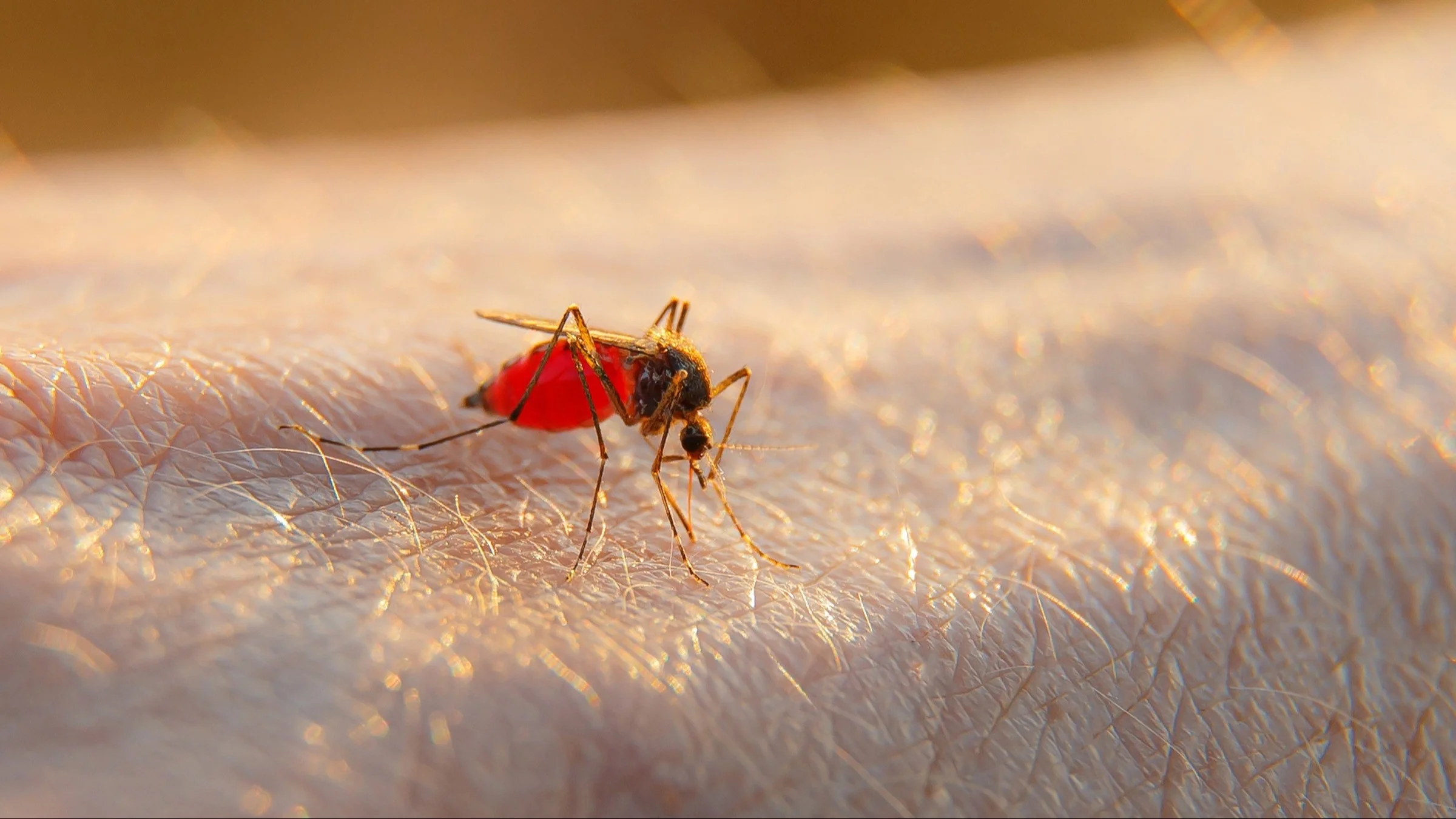Key takeaways:
West Nile virus is the leading cause of mosquito-related disease in the U.S.
About 1% of infections will result in a nervous system disease that can have life-long consequences.
Sprays with DEET are your best defense against West Nile virus.
In New York City during the summer of 1999, several people became sick with muscle weakness, brain inflammation, and meningitis. They were ultimately diagnosed with West Nile virus (WNV). This was the first time that WNV was reported in the Western Hemisphere. Since then, 3,000 to 4,000 cases have been reported throughout the U.S. each year. Continue reading to learn about how WNV is spread and diagnosed, what to do if you’re infected, and how worried you should be about it.
What is West Nile virus?
WNV is a virus that can infect the muscles and the brain. Most cases happen during warmer months like the summer and early fall when mosquitoes are most active. Most states have WNV activity every year. The Centers for Disease Control and Prevention (CDC) tracks WNV activity in mosquitoes and humans.
How do you get West Nile virus?
WNV is a type of virus called an arbovirus, which means it’s passed to humans through the bite of an infected insect — in this case, mosquitoes. Other examples of arboviral diseases are Yellow Fever, Dengue, and Zika. When a mosquito infected with WNV bites someone, the mosquito passes the virus through their saliva into the person’s bloodstream. From the bloodstream, the virus can enter the muscles and the brain.
There is a natural cycle that occurs between birds, mosquitos, and humans. Birds serve as the natural hosts for the virus because the virus lives in very high concentration within their blood. Mosquitos then bite birds and become infected. These infected mosquitoes can give the virus to humans. Since birds have long migration patterns, the virus has spread across the U.S.
What are the symptoms of West Nile virus?
Among people with WNV, 80% have no symptoms, and the infection goes away on its own without treatment.
The remaining 20% of people may develop mild symptoms of “West Nile fever,” which include:
Fever
Body aches
Muscle pain
Swollen lymph nodes
A red rash on the chest, stomach, back, and arms that starts off bumpy, then becomes flat and dark
But about 1 in 150 people who get WNV develop a more serious disease that affects the brain and spinal cord, causing encephalitis (inflammation of the brain), meningitis (inflammation of the lining around the brain and spinal cord), or poliomyelitis (paralysis). This life-threatening type of WNV is called neuroinvasive West Nile. Symptoms of neuroinvasive West Nile may include:
Persistent headache
Neck stiffness
Confusion
Seizures
Severe weakness and even paralysis
Coma
Death
Anyone who has or thinks they could have neuroinvasive West Nile should seek emergency medical care right away.
How long does West Nile virus last?
It usually takes between 2 to 6 days for a person to develop symptoms of WNV after a mosquito bite. In some cases, it can take up to 14 days. Mild symptoms of West Nile fever only last a few days (3 to 6 days) and resolve without treatment. Symptoms of neuroinvasive disease can last several weeks to months. In some cases, symptoms of neuroinvasive disease may be permanent. Neuroinvasive West Nile requires medical treatment.
Who’s most at risk of getting West Nile virus?
Serious symptoms of WNV are more common in:
People over 50 years old
People with diabetes
People with rheumatoid arthritis
People with organ transplants
People with significant heart disease
People with other immunosuppressive illnesses or who are taking immunosuppressant medication
Is West Nile virus contagious?
West Nile virus isn’t spread from person to person because the virus doesn’t reach a high concentration in human blood.
However, it’s possible to get WNV from an organ transplant or blood transfusion. Yet, all donated blood is screened for the presence of WNV and the blood is discarded if it tests positive. On the other hand, not all organ donation centers test for WNV, and it’s unclear whether the current testing methods work well on organs.
Pregnant women can transmit WNV to their unborn baby. However, the risk of this is very low, with only a few cases ever reported. WNV can also be transmitted through breast milk, but this is also rarely reported.
How is West Nile virus diagnosed?
In cases of neuroinvasive West Nile, a healthcare provider will perform a lumbar puncture and send the spinal fluid for testing. While blood tests for WNV exist, they’re not as reliable, so blood tests for WNV aren’t usually recommended.
What is the treatment for West Nile virus?
Most people have no symptoms and don’t need treatment for WNV. Those with minor symptoms only need supportive care, such as rest, nutrition, hydration, and perhaps an over-the-counter fever reliever like ibuprofen or acetaminophen.
People with neuroinvasive disease need to be hospitalized. In the hospital, they may require intensive care to support their vital organs while their body recovers. They may also need medications to help their immune system recover from the infection. There is no specific medication to treat West Nile.
What’s the outcome like for someone with West Nile virus?
Most people with West Nile virus either have no symptoms or mild symptoms and completely recover without medical attention. In cases of neuroinvasive disease, symptoms may last for weeks or months. In some cases, the symptoms are permanent and can include:
Hearing loss
Dementia
Anxiety
Depression
Parkinson-like movement disorders
Neuroinvasive disease is fatal in about 10% of cases. Fortunately, this only accounts for about 0.1% of all WNV infections.
If you’re bitten by an infected mosquito, will you definitely get West Nile virus?
A mosquito bite from an infected mosquito doesn’t mean that you will definitely get WNV. The chance of WNV getting into someone’s blood from an infected mosquito’s bite is only 1 in 300.
Additionally, there are 200 types of mosquitoes in the U.S., and only some of these can carry or spread diseases to humans. The vast majority of the mosquito population doesn’t carry any diseases at all, including WNV. It’s unlikely that any single mosquito bite will result in illness.
How do you lower your chances of getting West Nile virus?
The best way to prevent getting West Nile virus is by using sprays containing mosquito repellants like DEET. This is particularly important during mosquito season, which includes summer and early fall in many areas of the U.S. Additional preventative steps are:
Wear long-sleeved shirts and long-pants when outdoors, if possible.
Use screens on windows and doors so mosquitoes don’t get into the home.
Use mosquito netting when sleeping outdoors.
Use mosquito repellent plants or citronella products if you cannot tolerate DEET. These products are not as effective as DEET.
Stay away from dead birds and animals and report dead birds to your local health department.
There is currently no vaccine for WNV, but there is ongoing research into vaccine development.
The bottom line
West Nile virus is a mosquito-borne disease that can have significant health consequences. Fortunately, serious illness is very uncommon and most people who get WNV have no symptoms. Mosquito control programs combined with mosquito bite prevention can help you stay safe from WNV.

Why trust our experts?


References
Centers for Disease Control and Prevention. (2020). Mosquitoes in the United States.
Centers for Disease Control and Prevention. (2021). Blood transfusion and organ donation.
Centers for Disease Control and Prevention. (2021). Diagnostic testing.
Centers for Disease Control and Prevention. (2021). Mother to baby during pregnancy, delivery, or breast feeding.
Centers for Disease Control and Prevention. (2021). Symptoms, diagnosis, & treatment.
Centers for Disease Control and Prevention. (2021). Treatment & prevention.
Centers for Disease Control and Prevention. (2021). West Nile virus.
Centers for Disease Control and Prevention. (2022). West Nile virus activity by state 2021.
Connecticut Mosquito Management. (n.d.). West Nile virus - frequently asked questions.
Connecticut Mosquito Management. (2020). Mosquito-transmitted diseases.
Habarugira, G., et al. (2020). West Nile virus: An update on pathobiology, epidemiology, diagnostics, control and “one health” implications. Pathogens.
Kaiser, J. A., et al. (2019). Twenty years of progress toward West Nile virus vaccine development. Viruses.
Lindsey, N. P., et al. (2010). Surveillance for human West Nile virus disease --- United States, 1999--2008. Morbidity and Mortality Weekly Report (MMWR).
Nash, D., et al. (2001). The outbreak of West Nile virus infection in the New York City area in 1999. The New England Journal of Medicine.
New York State Department of Health. (2017). Arboviral (arthropod-borne viral) diseases.
World Health Organization. (2017). West Nile virus.


